Municipality of Balilihan Province Bohol
District 1st district of Bohol
Income class 4th class
Mayor: Victoria Migriño Chatto
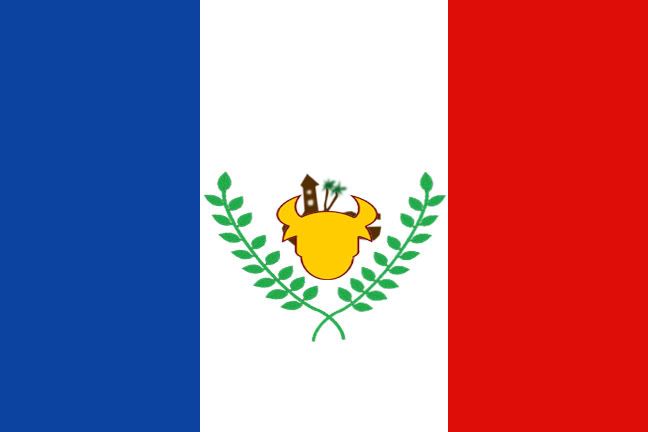
Balilihan municipal flag
Balilihan is a 4th class municipality in the province of Bohol, Philippines. Balilihan is located 22 kilometers northeast of Tagbilaran City via Cortes (thru CPG North Avenue) and 19.7 kilometers northeast via Corella (thru J.A. Clarin Street). It holds the fourth (4th) largest land mass of the province, having 15,022 hectares/150.22 square km of its land area. According to the 2008 health survey, it has a population of 18,380 people and 8,969 registered voters as of May 2004 elections.
Municipal ProfileName of Municipality: Balilihan
Year Established: September 29, 1828
Income Class: 4th class
Area: 15, 022 hectares
Number of Barangays: 31
Number of Puroks: 186
Population: 17, 131 (2007 NSCB) / 18, 380 (2008 Health Survey)
Number of Household: 3, 101 (2000 NSO count)
Average Household Size: 5
Annual Income:(1995) : P 10, 237, 000.00
(1996) : P 10, 367, 000.00
(1997) : P 11, 661, 321.00
(1998) : P 12, 833, 723.24
(1999) : P 15, 942, 548.42
(2000) : P 17, 660, 293.00
(2001) : P 18, 835, 219.00
(2002) : P 23, 037, 037.33
(2003) : P 23, 868, 760.00
(2004) : P 21, 302, 269.00
(2005) : P 22, 977, 902.00
(2006) : P 25, 191, 220.00
(2007) : P 27, 790, 154.00
(2008) : P 31, 120, 314.00
(2009) : P 36, 477, 589.00
HistoryThe place is a panorama of verdant hills, rugged mountains and green fields. It is said to have been so named because of the grass “balili†which grew in abundance in the locality. Balilihan means a place where plenty of “balili†grows.
Before the beginning of the 19th century, Balilihan was a barrio of the town of Baclayon and an old settlement where the families of Orig, Dangoy, Racho, Maniwang, Lacea and Pongase were the first inhabitants. When the Dagohoy revolt was suppressed by the Spaniards, the authorities established a garrison in Datag (one of its barrios) to discourage and stamp out further uprisings on the part of the natives. When Balilihan was separated from its mother town (Baclayon) on September 29, 1828, the Spanish government, represented by Friar Tomas, formally established a settlement or “pueblo†in the sitio “Bay sa Iring†named so for the network of caves from where cats go into hiding which was about two kilometers from the Spanish garrison. Serafin Pongase was appointed as the first captain, but his administration was short-lived because he met his death in the hands of Manuel Danila with whom he had an altercation.
Spanish Belfry in Poblacion, Balilihan - served as the watch tower during Spanish regimeLater, due to the scarcity of water, the seat of government was transferred to its present site which is amply supplied with water from various springs such as Tan Pero, Ka Dadoy, Boho, Ka Boro, Bulingit, Komon and Abaca. The elevated land also made a low hill a good viewing point to keep watch over all nearby towns. Thus the construction of a Spanish Belfry similar to the watch towers of the shores atop the hill. This tower is made of adobe stones gathered by foot from the rock deposits of the mother town Baclayon. It was erected in the year 1835 under the able management of Friar Tomas and Capitan Placido Andoy. It was inaugurated in 1846 when Capitan Gabriel Racho was the gobernadorcillo. In 1888, Friar Benito Grayoa, who at that time exercised control over local governments, ordered the transfer of the municipio to Cabad, a barrio four kilometers west of the poblacion. The padre’s plan met vigorous opposition from the people and through the able leadership of Capitan Bartolome Racho, they filed the protest before the Spanish Military Governor Linares who disapproved the proposal causing Friar Grayoa’s ire who then plotted for the consequent punishment of the captain by dragging him with the Friar’s horse through the streets causing his death in jail. Fearing reprisals from the clergy, some of the people migrated to Surigao, Leyte and Misamis. Not long afterwards, Friar Grayoa was transferred to Siquijor.
The Spanish era flourished with the construction of Spanish church at the foot of the Spanish watchtower where a large patio became the hall for social affairs and the friar’s convent a school for the cartilla, with the municipio across. With the guidance of the local appointed leaders under the control of the Spanish friar, the town slowly progressed peacefully until the outbreak of the Revolution in1898.
On November 12, 1900, American soldiers were known to be coming from Antequera. All officials of the town led by Capitan Antonio Racho came out to meet the soldiers with a brass band, but when the Americans arrived, they gathered all the officials in the municipal hall building and placed them underguard, for the Americans had heard that the town officials had been supporting the insurgents. The supplications of spokesman Segundo Racho not to burn the town was of no avail and the sounds of the welcoming brass band turned into valleys of gunshots. The officials were ordered to move toward Sevilla while the civilians ran for safety to the out skirts of the town. The town was razed down to the ground. The Americans burned the church, the convent, the municipal building, the school building for boys and girls as well as private houses. The only structure that was spared was the Belfry on the top of the hill.
Years later, the people, or the first time of their lives, witnessed an election of their local leaders wherein Manuel Diamante was elected president. It was during the administration of these elected local leaders that remarkable progress was achieved. Streets were constructed, peace and order was restored and then the houses and the population of the central area (Poblacion) increased remarkably.
In 1904, there was a move to fuse Balilihan with Antequera in order to meet the requirements of a municipality under the American regime. The people under the able leadership of President Manuel Diamante vehemently objected to the plan, so the following year the Philippine Commission finally ruled in its Act. No. 350 abolishing the municipality of Catigbi-an and instead annexing it to Balilihan as one of its barrios.
During World War II, the town residents went into hiding in their mountain hideouts for fear of the Japanese. Balilihan was a haven of refugees from other places who lived a life of deprivation in the mountains. Many innocent civilians were either tortured or put into death by the enemies on mere suspicions of guerilla activities. Ex-Mayor Patricio Ibarra was put up by the people as war time mayor to defend them from their enemies.
Political Divisions of Balilihan, Bohol
Municipal Hall of Balilihan, BoholThe Japanese atrocities gave rise to the organizations of the guerrillas into full combat force under the supreme command of Mayor Ismael Ingeniero. The people helped the guerilla movement by feeding the troops in the front lines as well as those in the headquarters in “Behind the Cloudsâ€, in Maitum which was the famous concentration camp of the war. Enemy collaborators were tried here and those found guilty of high crimes were liquidated. Those with slight offenses were imprisoned for the duration of the war. Another concentration camp was at Hanopol where prisoners were kept.
The liberation from Japanese atrocities was a cause for a happy celebration. The people moved down from their hiding places in the mountains and celebrated with the evacuees the joys of freedom under the tutelage of the Americans. Some evacuees remained for reason of marriage or others. Everyone worked hard to rehabilitate and repair their homes. Schools were opened, public offices functioned, peace and order maintained and life became normal once more.
Public Market of BalilihanIndependence Day was celebrated on July 4, 1946 with the gathering of war babies and children at the town plaza with the Rizal Monument as the focal point and place of assembly – an act that symbolizes a new tomorrow for the new generation.
In 1948, Balilihan suffered a great loss of territory when the biggest barrio (Catigbi-an) was given its town charter in spite of the strong representation against the move by town Mayor Balbino Chatto and Gerardo Racho who personally went to Malacañang to see President Elpidio Quirino. Catigbian was the given away to be on its own.
Barangays (Balilihan is politically subdivided into 31 barangays)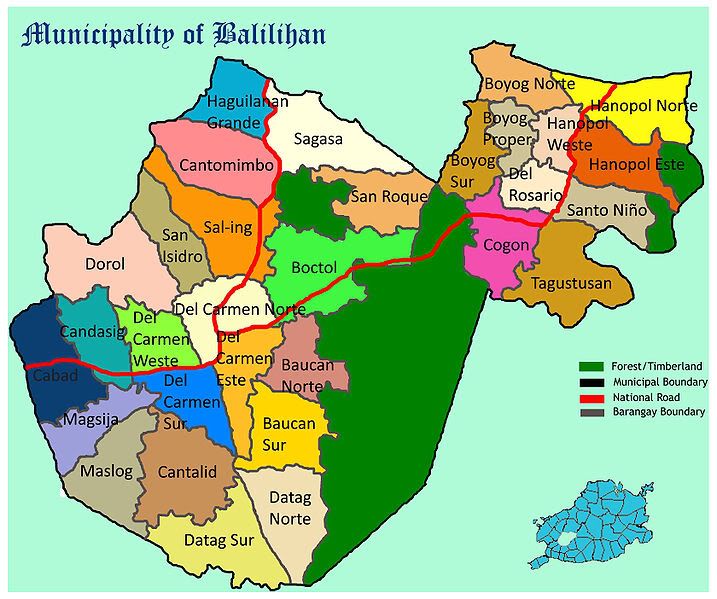
Baucan Norte
Baucan Sur
Boctol
Boyog Norte
Boyog Proper
Boyog Sur
Cabad
Candasig
Cantalid
Cantomimbo
Cogon
Datag Norte
Datag Sur
Del Carmen Este (Pob.)
Del Carmen Norte (Pob.)
Del Carmen Weste (Pob.)
Del Carmen Sur (Pob.)
Del Rosario
Dorol
Haguilanan Grande
Hanopol Este
Hanopol Norte
Hanopol Weste
Magsija
Maslog
Sagasa
Sal-ing
San Isidro
San Roque
Santo Niño
Tagustusan
EducationElementary schoolsBalilihan Central Elementary School
Baucan Elementary School
Boctol Elementary School
Boyog Primary School
Cabad-Candasig Elementary School
Cantomimbo Primary School
Cogon-Tagustusan Elementary School
Datag Elementary School
Dorol Elementary School
Haguilanan Grande Elementary School
Hanopol Elementary School
Magsija-Maslog Elementary School
Sagasa Elementary School
Sal-ing Elementary School
San Isidro Primary School
San Roque Elementary School
Secondary SchoolsCongressman Pablo Malasarte Memorial High School (CPMMHS)
Carmel Academy (CA)
Hanopol High School (HHS)
Tertiary SchoolCentral Visayas State College of Agriculture Forestry and Technology - Tagbilaran City Campus, Balilihan Extension Class (CVSCAFT I.T. Campus)
Balilihan HymnBalilihan sa Kahangturan
Kabalilhan diha sa imong ngalan,
Duyog ang kusog sa yanong buhilaman,
Kapatagan, kabukiran nga malunhaw,
Panalangin ni Bathala wa n’ya ihikaw;
Dinagayday sa imong kasugiran,
Diwa ni Dagohoy hunis kaliwatan,
Ngalan mo nakulit na sa mga bungtod,
Diha sa sabakan mo garbo ug bantayog;
Balilihan, Balilihan
Among lungsod, among yutawhan,
Gabayan ka sa mga tinguha,
Ikaw maoy mutya, among himaya,
Balilihan, Balilihan
Among lungsod, among yutawhan,
Gugma’g kadasig ikaw halaran,
Balilihan sa kahangturan
Balilihan, Balilihan
Among lungsod, among yutawhan,
Gabayan ka sa mga tinguha,
Ikaw maoy mutya, among himaya,
Balilihan, Balilihan
Among lungsod, among yutawhan,
Gugma’g kadasig ikaw halaran,
Balilihan sa kahangturan.
Images of Balilihan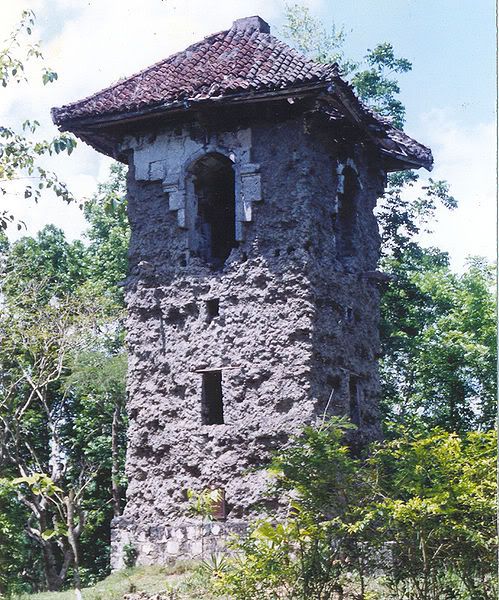
Bandilion Hill Belfry (developed as tourist attraction)
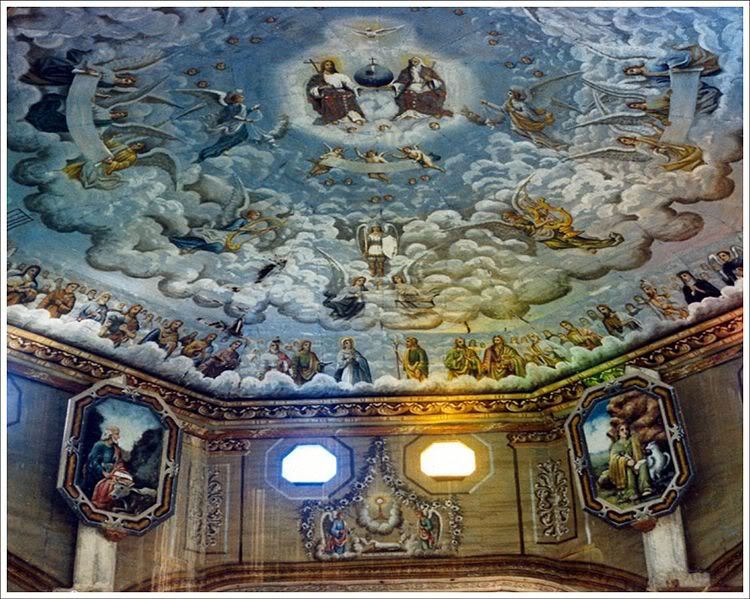
mount carmel church ceiling painting
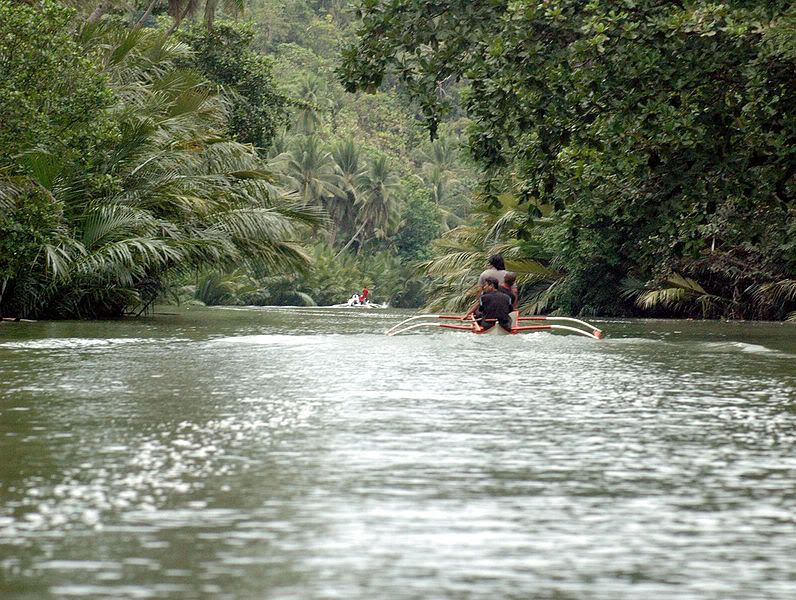
abatan river cruise-balilihan part
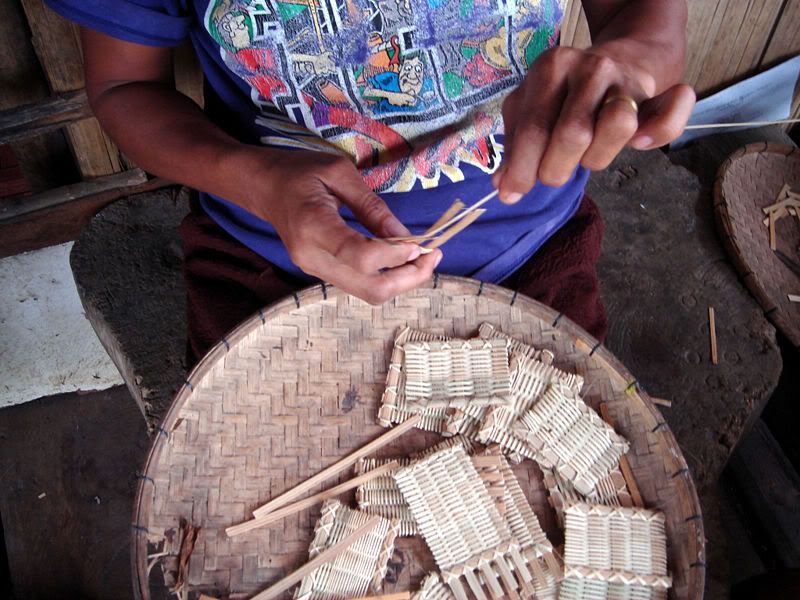
basket weaving (one of the main source of income for the balilinhons)
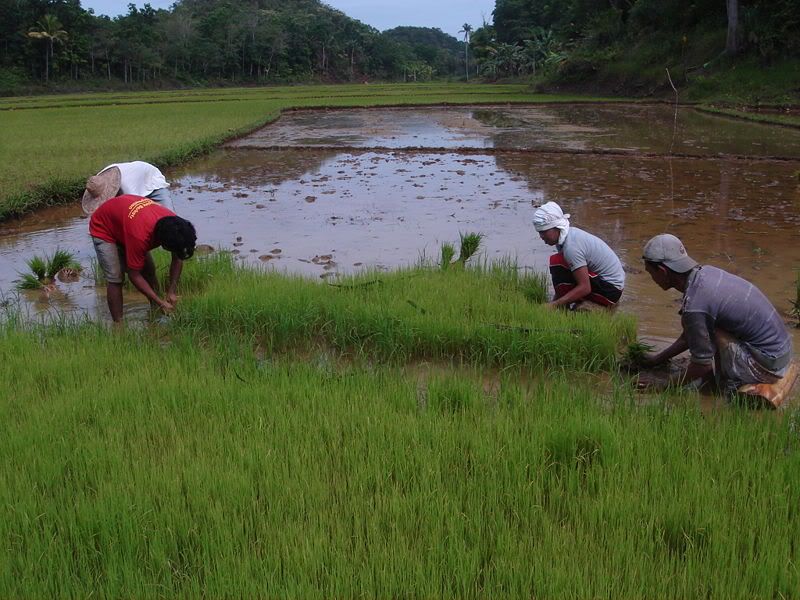
rice planting (one of the main source of income for the balilinhons)
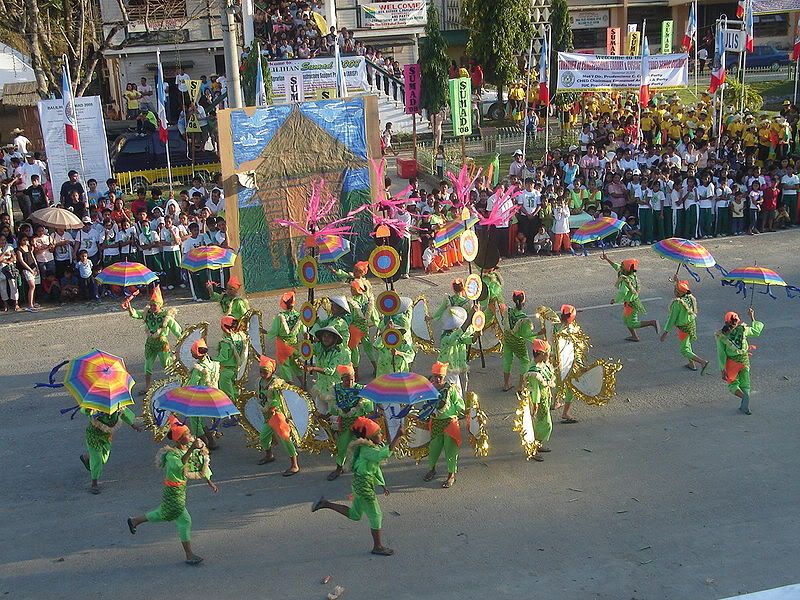
sumad festival street dancing (sumad is celebrated commemorating the foundation day of balilihan)
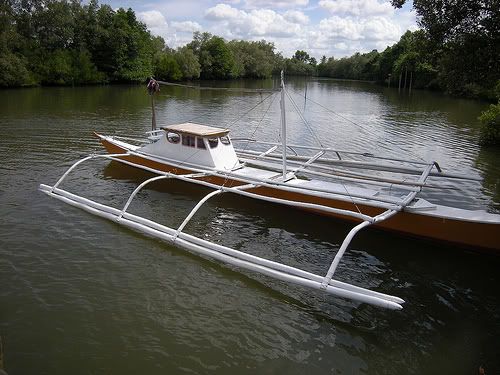
abatan river - balilihan part
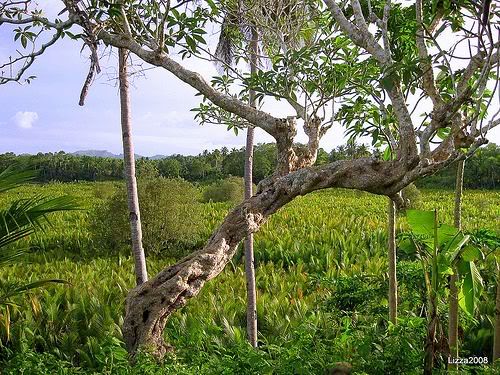
nipa region in dorol, balilihan
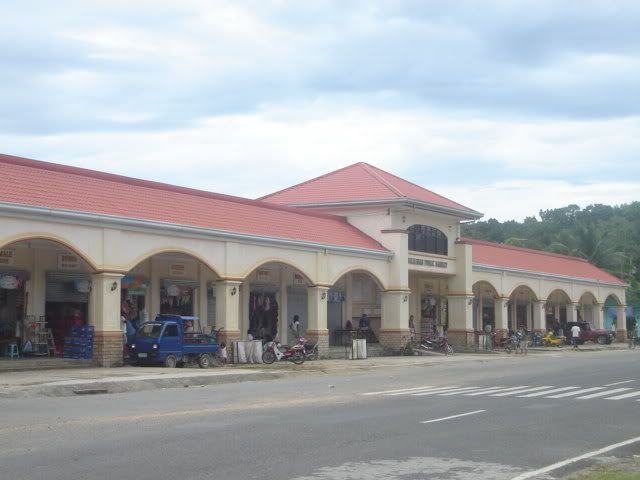
newly renovated public market (old market was razed by fire)
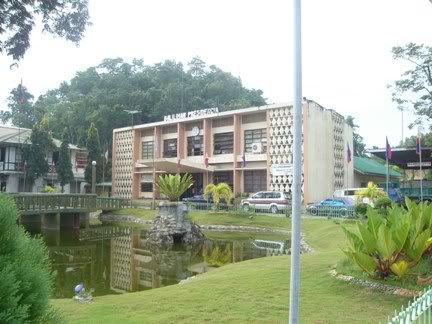
balilihan municipal hall

part of inambakan falls ni san isidro
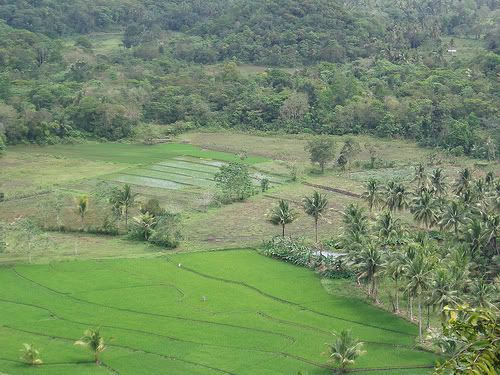
rice paddies in hanopol
Linkback:
https://tubagbohol.mikeligalig.com/index.php?topic=22308.0